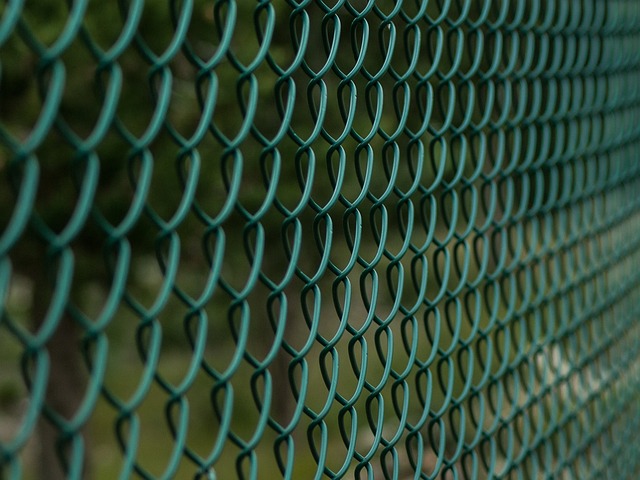In the pursuit of sustainable living, New Bedford, MA is witnessing a growing trend towards eco-friendly fencing materials. This article explores how these natural alternatives not only contribute to environmental conservation but also enhance property aesthetics and functionality. From recycled plastic and wood composites to organic fabrics, we delve into the benefits, durability, and local installation considerations of green fences, offering practical insights for residents seeking an environmentally conscious solution for their outdoor spaces.
- Eco-Friendly Fencing Trends in New Bedford
- Benefits of Sustainable Fence Materials
- Natural Options for Long-Lasting Fences
- Reducing Environmental Impact with Eco-Fencing
- Aesthetics and Functionality in Green Fences
- Local Installation and Maintenance Tips
Eco-Friendly Fencing Trends in New Bedford
In recent years, New Bedford has witnessed a growing trend towards eco-friendly fencing materials among its residents and businesses. This shift is driven by a heightened environmental consciousness and the desire to create sustainable outdoor spaces. Natural, renewable resources like bamboo, recycled plastic, and wood from certified sustainable sources are increasingly popular. These materials not only reduce carbon footprints but also enhance the aesthetic appeal of properties with their unique textures and colors.
Local landscaping companies and DIY enthusiasts in New Bedford are embracing these eco-friendly trends, incorporating innovative fencing solutions into their projects. From sleek bamboo fences to robust recycled plastic panels, these alternatives offer durability, low maintenance, and a clear environmental benefit. As New Bedford continues to prioritize sustainability, the demand for such green fencing options is expected to rise, reshaping the city’s landscape while promoting harmony with nature.
Benefits of Sustainable Fence Materials
In New Bedford, MA, opting for eco-friendly fencing materials offers a multitude of benefits. These sustainable options not only contribute to a greener environment but also enhance the overall aesthetics of your space. Natural materials like bamboo, recycled plastic, and wood from certified sustainable sources are durable, reducing the need for frequent replacements. They also provide excellent insulation, helping regulate temperatures and lowering energy costs associated with heating and cooling.
Moreover, these materials are biodegradable or easily recyclable, significantly minimizing their environmental footprint. Unlike traditional fencing that can last for decades and contribute to waste accumulation, eco-friendly alternatives allow for easier disposal or repurposing. This approach aligns with the growing awareness of resource conservation and sustainable living practices, making it a responsible choice for New Bedford residents looking to preserve their natural surroundings while enhancing their outdoor spaces.
Natural Options for Long-Lasting Fences
In New Bedford, MA, homeowners and property managers are increasingly looking to eco-friendly fencing options that offer both durability and aesthetic appeal. Natural materials like wood, bamboo, and hemp provide a sustainable alternative to traditional vinyl or metal fences. These options not only reduce environmental impact but also contribute to a healthier local ecosystem by supporting the growth of renewable resources.
Wooden fences, for instance, can be sourced from certified sustainable forests, ensuring responsible logging practices. Bamboo, known for its rapid growth and strength, makes for an excellent, long-lasting fence material. Hemp, another natural wonder, is both rot-resistant and environmentally friendly. These natural options not only enhance the curb appeal of properties but also offer better insulation, noise reduction, and privacy compared to conventional fences.
Reducing Environmental Impact with Eco-Fencing
In an era where environmental consciousness is growing, choosing eco-friendly fencing materials offers a sustainable solution for New Bedford residents and businesses. Traditional fencing often involves harmful production processes and contributes to environmental degradation through material disposal. However, eco-fencing alternatives provide an opportunity to minimize these impacts.
These materials are typically made from renewable resources or recycled content, reducing the carbon footprint associated with manufacturing. They also contribute to a more harmonious relationship with local ecosystems by preventing soil erosion, preserving biodiversity, and offering natural barriers that support local flora and fauna. By opting for eco-friendly fencing, New Bedford can take a step towards a greener future while enhancing the overall aesthetic appeal of outdoor spaces.
Aesthetics and Functionality in Green Fences
In the pursuit of an eco-friendly approach, New Bedford residents now have access to fencing materials that offer both aesthetic appeal and functional benefits for their properties. Green fences, crafted from sustainable sources like bamboo, recycled plastic, or organic wood treatments, seamlessly blend into natural landscapes while providing robust solutions to traditional fencing issues. The visual allure of these fences, with their earthy tones and unique textures, enriches the local environment without compromising aesthetics.
Beyond their attractive appearance, green fences excel in functionality. They offer privacy, security, and noise reduction, much like conventional fences, but with enhanced eco-credentials. These materials are often designed to withstand harsh weather conditions, ensuring longevity and reducing maintenance needs. This duality of purpose—enhancing curb appeal while providing practical solutions—makes eco-friendly fencing a wise choice for New Bedford homeowners seeking both beauty and sustainability.
Local Installation and Maintenance Tips
When opting for eco-friendly fencing materials, local installation and maintenance play a crucial role in maximizing their benefits. For New Bedford residents, seeking out locally sourced installers familiar with the region’s unique challenges is advisable. This ensures proper fitting, considering local climate and terrain, enhancing the fence’s longevity.
Regular maintenance is key to preserving these sustainable fences. Residents should inspect them for any signs of damage or wear, especially during harsh weather changes. Simple care routines like cleaning, repairing minor issues promptly, and applying protective coatings (as recommended by manufacturers) can significantly extend the life of these eco-conscious fencing solutions.
